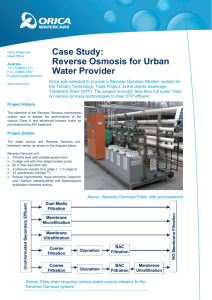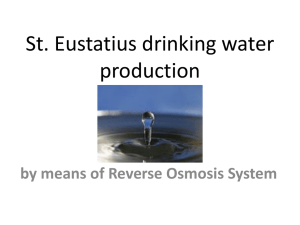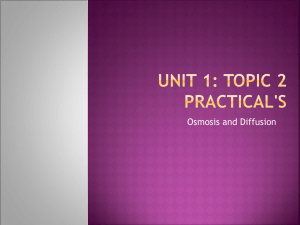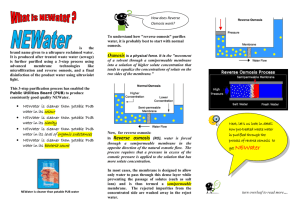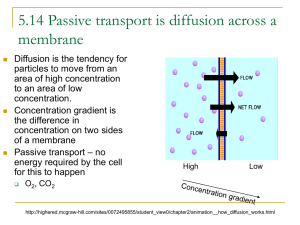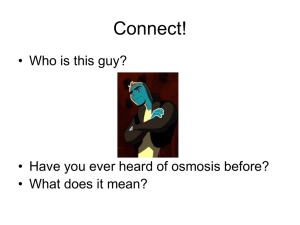Desalination and Reverse Osmosis File
advertisement
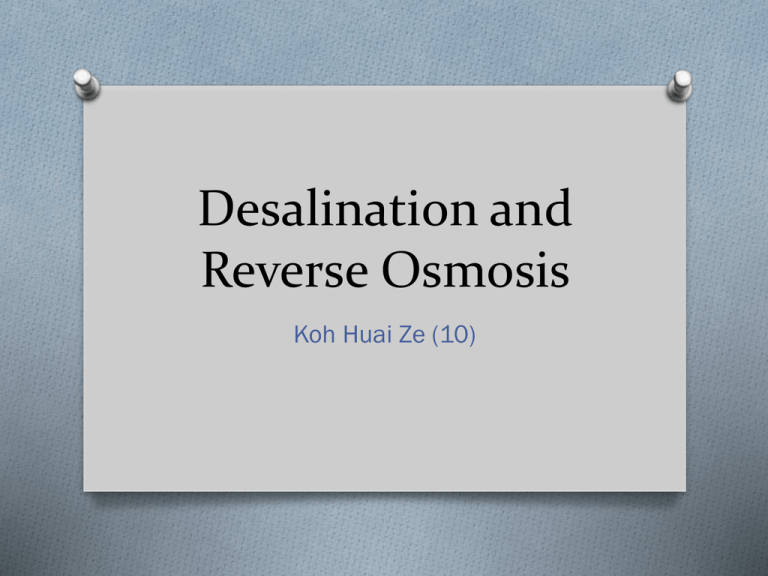
Desalination and Reverse Osmosis Koh Huai Ze (10) What is Desalination? O The process of removing salt and other minerals from water O Water is desalinated in order to convert salt water to fresh water so that it is suitable for human consumption O Very costly as it requires large amounts of energy and specialised infrastructure Methods of Desalination Vacuum Distillation O The boiling of water at a much lower temperature than normal, saving energy Reverse Osmosis O Uses membranes to desalinate, applying reverse osmosis technology O Uses semi-permeable membranes and pressure to separate salts from water O Less energy is used compared to thermal distillation O Also used to purify fresh water for medical and industrial uses Reverse Osmosis Desalination Plant Reverse Osmosis In normal osmosis: O Water molecules move from a region of higher concentration to a region of lower concentration through a partially permeable membrane In reverse osmosis: O Water molecules are forced to move from a region of lower concentration to a region of higher concentration by applying a huge amount of pressure Reverse Osmosis Result: O The solute is retained on the pressurised side of the membrane O The pure solvent is allowed to pass to the other side Membrane used: O Designed to only allow water molecules to pass through O Does not allow larger molecules such as salt ions to pass through Reverse Osmosis O The pressure applied must overcome the natural osmotic pressure. O Eg. 600-1200 psi of pressure must be used for seawater, as it has a natural osmotic pressure of 390 psi. *Osmotic pressure: The tendency for the solvent to flow through the membrane until there is the same concentration of the solvent on both sides of the membrane Reverse Osmosis - NEWater O In 2002, Singapore announced that a O O O O process named NEWater would be a significant part of its future water plans Involves using reverse osmosis to treat domestic wastewater before discharging the treated water into the reservoirs Currently meets 30% of Singapore’s total water demand Projected to meet 50% of Singapore’s future water demand by 2060 Involves advanced dual membrane and ultraviolet technologies NEWater NEWater Plant Hope you have learnt something from this


